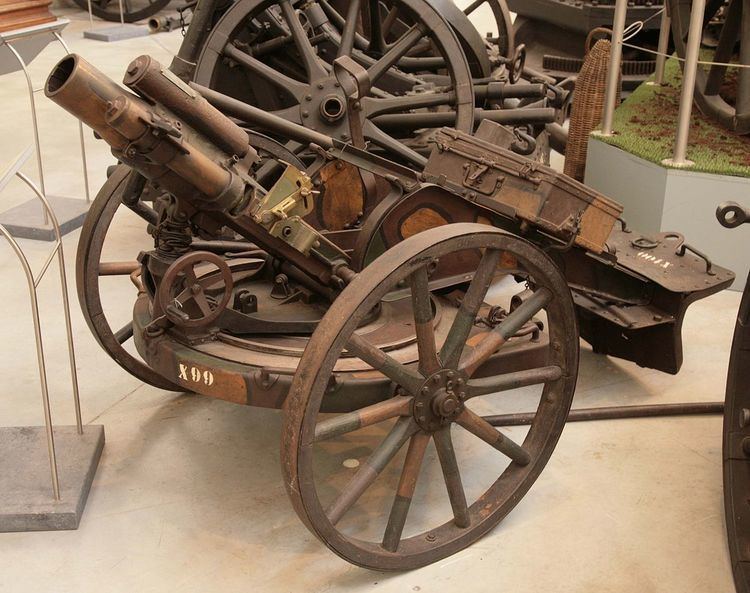Used by German Empire | Place of origin German Empire Designed 1909-1914 | |
 | ||
The 7.58 cm Minenwerfer a.A. (alter Art or old model) (7.58 cm leMW), was a German First World War mortar.
History
The Russo-Japanese War of 1905 had shown the value of mortars against modern fieldworks and fortifications and the Germans were in the process of fielding a whole series of mortars before the beginning of World War I. Their term for them was Minenwerfer, literally mine-thrower; they were initially assigned to engineer units in their siege warfare role. By the Winter of 1916-17, they were transferred to infantry units where the leMW's light weight permitted them to accompany the foot-soldiers in the advance.
In common with Rheinmetall's other Minenwerfer designs, the leMW was a rifled muzzle-loader that had hydraulic cylinders on each side of the tube to absorb the recoil forces and spring recuperators to return the tube to the firing position. It had a rectangular firing platform with limited traverse and elevation. Wheels could be added to ease transportation or it could be carried by at least six men. In 1916, a new model, designated as the n.A. or neuer Art (new version), was fielded that included a circular firing platform, giving a turntable effect, which permitted a full 360 degree traverse. It also had a longer 16 inches (410 mm) barrel and could be used for direct fire between 0° and 27° elevation if the new 90 kg (200 lb) trail was fitted to absorb the recoil forces. In this mode it was pressed into service as an anti-tank gun.
